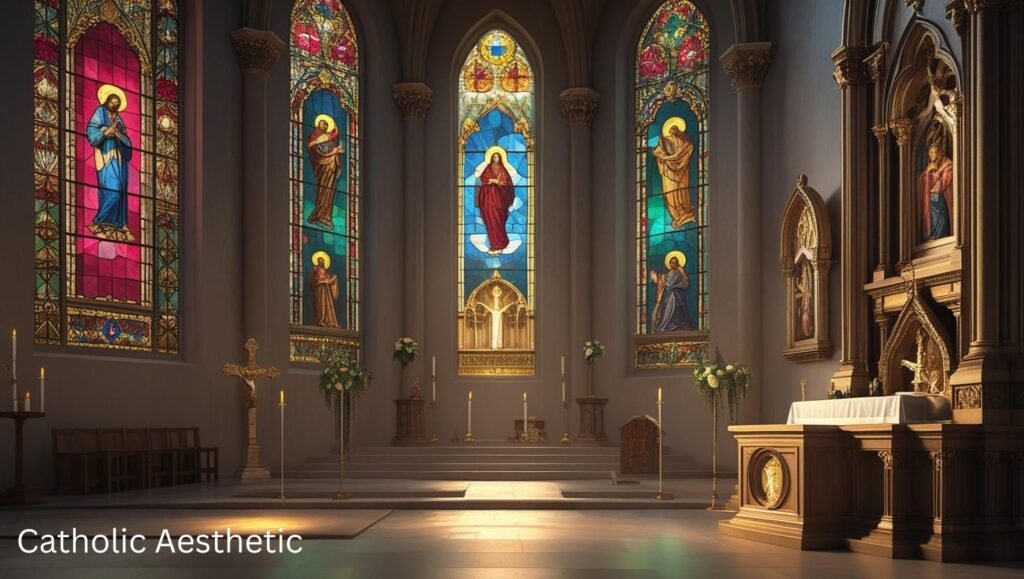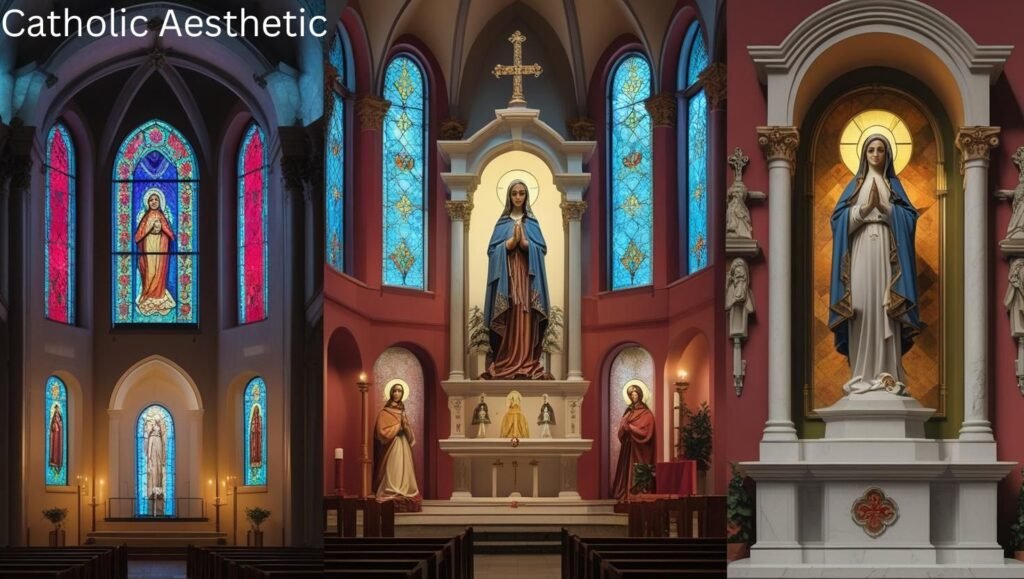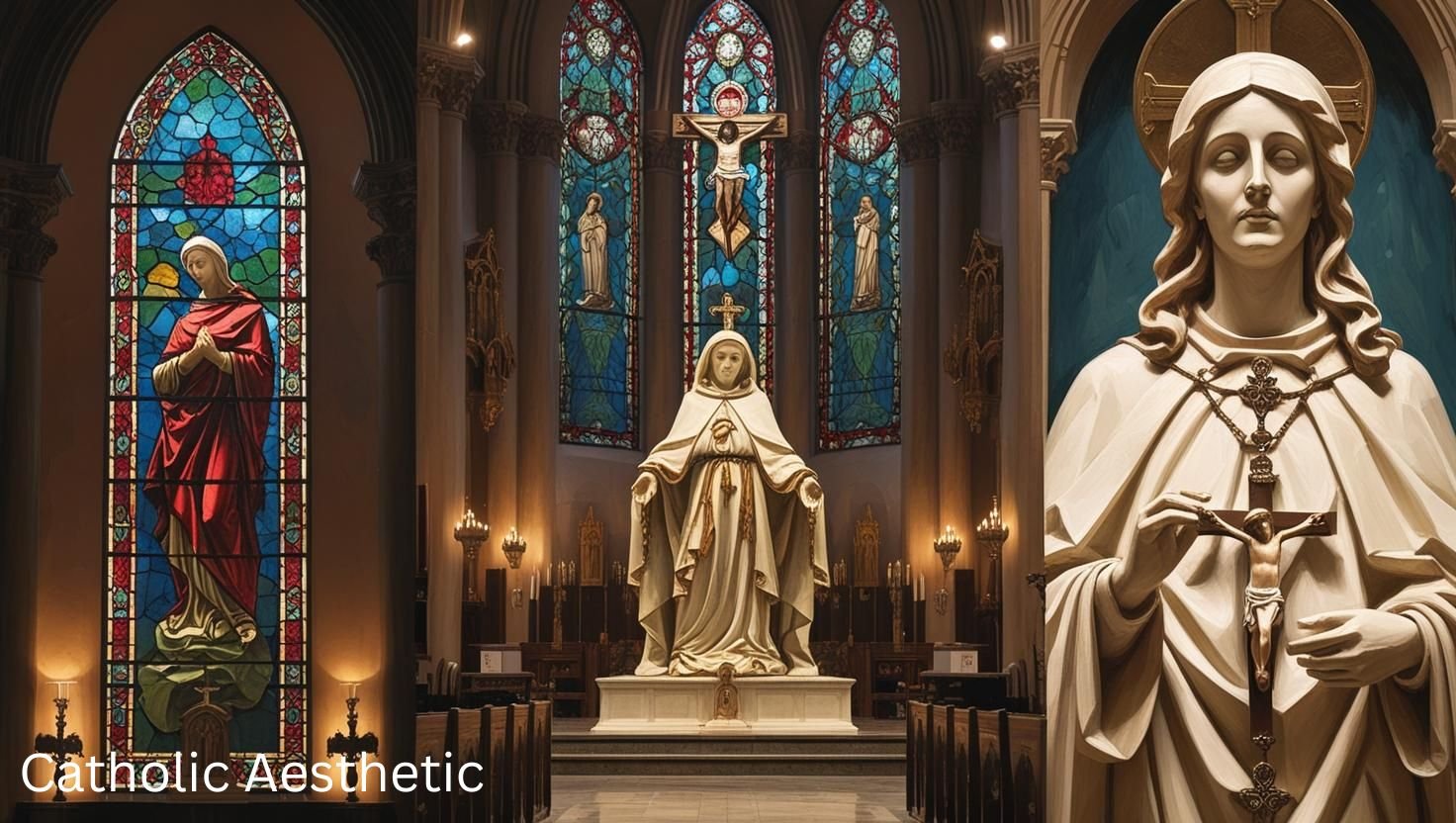The Catholic aesthetic is a timeless visual and spiritual tradition rooted in centuries of art, architecture, symbolism, and sacred expression. From Gothic cathedrals and Latin Mass vestments to stained glass windows, rosaries, and Gregorian chants, the Catholic aesthetic embodies elegance, reverence, and transcendence.
Whether you’re exploring its influence on fashion, interior design, or spiritual life, this aesthetic offers a beautiful fusion of faith and artistry. Discover how the Catholic aesthetic is making a modern comeback through social media, vintage trends, and personal devotion while staying deeply connected to its rich religious heritage.
The Catholic aesthetic is more than just a visual trend—it’s a deeply rooted expression of faith and beauty that spans centuries. With origins in sacred architecture, liturgical traditions, and religious symbolism, the Catholic aesthetic has influenced not only the spiritual world but also the realms of fashion, art, music, and culture.
Defined by ornate detail, reverent atmosphere, and classical beauty, the Catholic aesthetic continues to captivate modern audiences, from practising Catholics to designers, artists, and even social media influencers.

The Catholic Church has always embraced beauty as a path to the divine. Art, music, architecture, and sacred objects weren’t just decorative—they were tools for worship, teaching, and elevating the human soul.
- Gothic and Romanesque architecture
- Stained glass windows
- Religious paintings and icons
- Gold and ivory liturgical colors
- Incense, candles, and sacred music
- Rosaries, relics, and devotional objects
Every detail in a traditional Catholic church is intentional, inviting awe, reverence, and contemplation. This sense of transcendence is central to the Catholic aesthetic.
The Catholic aesthetic is instantly recognizable by its sacred beauty, symbolism, and rich sensory elements. Here’s a breakdown of its most common features:
| Element | Description |
|---|---|
| Colors | Deep reds (martyrdom), gold (divine glory), purple (penance), white (purity) |
| Architecture | Cathedrals, vaulted ceilings, stone, arches, and sacred symmetry |
| Art | Paintings of saints, Madonna and Child, crucifixion scenes |
| Fashion | Modest silhouettes, lace veils, embroidered garments |
| Lighting | Candlelight, stained-glass reflections, ambient darkness |
| Sound | Gregorian chants, organ music, bells |
Each aspect of the Catholic aesthetic is rich in meaning and spiritual purpose designed not only to please the eye but to lift the heart to God.

Surprisingly, the Catholic aesthetic is trending especially among Gen Z and Millennials. Social media platforms like TikTok and Instagram are full of posts under hashtags like #catholicaesthetic, #tradcath, and #latinsaintcore.
These trends blend vintage Catholic symbols with modern fashion, decor, and digital content to create a unique, contemplative style that resonates across generations.
- Fashion: Vintage crucifix jewelry, mantillas (lace veils), modest dresses, Latin-inspired accessories.
- Home Decor: Gilded frames, saint statues, votive candles, rosaries as wall art.
- Media: Aesthetic prayer journals, calligraphy scripture quotes, devotional photography.
- Music & Soundscapes: Chant playlists, Latin Mass recordings, ambient religious soundtracks.
For some, the aesthetic is about nostalgia and heritage. For others, it’s about rediscovering truth, beauty, and depth in a culture often marked by superficial trends.
From haute couture to thrifted vintage, Catholicism has inspired some of fashion’s most dramatic moments.
- Dolce & Gabbana’s Alta Moda collections featured cathedral-printed gowns and jewel-encrusted Madonna icons.
- Met Gala 2018: “Heavenly Bodies: Fashion and the Catholic Imagination” showcased clerical garb, mitres, crosses, and ecclesiastical embroidery.
- Everyday fashionistas now incorporate:
- Chapel veils as headpieces
- Saint medal necklaces
- Rosary-inspired accessories
- Modest, flowing garments in liturgical colors
This fusion of style and spirituality makes the Catholic aesthetic uniquely expressive.
Creating a sacred space at home is another way the Catholic aesthetic finds expression.
- Create a home altar with candles, crucifixes, and saint images
- Use antique gold frames for art and mirrors
- Display statues or busts of saints and angels
- Choose deep, contemplative colors like burgundy, ivory, or navy
- Add candlesticks, prayer books, and lace cloths for traditional touches
Even without grand architecture, you can incorporate small elements that bring a sense of reverence and beauty into everyday life.
What sets the Catholic aesthetic apart from other styles is its depth of symbolism. Each color, item, or action points to something sacred.
- Incense = Prayer rising to heaven
- Candles = Christ as the Light of the World
- Gold = God’s majesty and glory
- Veils = Sacred mystery and humility
- Latin = Timeless, universal prayer
Understanding these meanings turns mere decor into sacramentals tools that draw you closer to God.
The Catholic aesthetic is often referred to as “sacred aesthetic” or “liturgical aesthetic,” reflecting its roots in religious art, tradition, and symbolism.
The Catholic art style is commonly called sacred art, encompassing styles like Gothic, Baroque, and Renaissance that depict religious themes and symbolism.
Aesthetic in Christianity refers to the use of beauty—through art, music, architecture, and symbolism—to express faith, inspire worship, and reflect the divine.
A Catholic ascetic is someone who practices self-denial, discipline, and spiritual exercises to grow in holiness and deepen their relationship with God.
The term aesthetic relates to beauty and artistic expression, while ascetic refers to self-discipline and abstaining from worldly pleasures for spiritual reasons.
The Catholic aesthetic is a profound marriage of faith and beauty a visual and spiritual language that transcends time, culture, and trend cycles. Whether you’re drawn to its ornate architecture, its reverent rituals, or its vintage elegance, embracing this aesthetic means more than curating a look.
It’s about celebrating a worldview that sees the divine reflected in the material world.From sacred spaces to daily fashion, from quiet devotion to artistic inspiration the Catholic aesthetic invites you to slow down, reflect, and reconnect with beauty that points beyond itself.
Spider Lashes: The Bold Makeup Trend That’s Taking Over attention since 60’s
Huda Beauty Powder: The Ultimate Guide to Flawless Finish and Oil Control
Beauty in Black Season 2: Release Date, Plot, Cast & What to Expect
